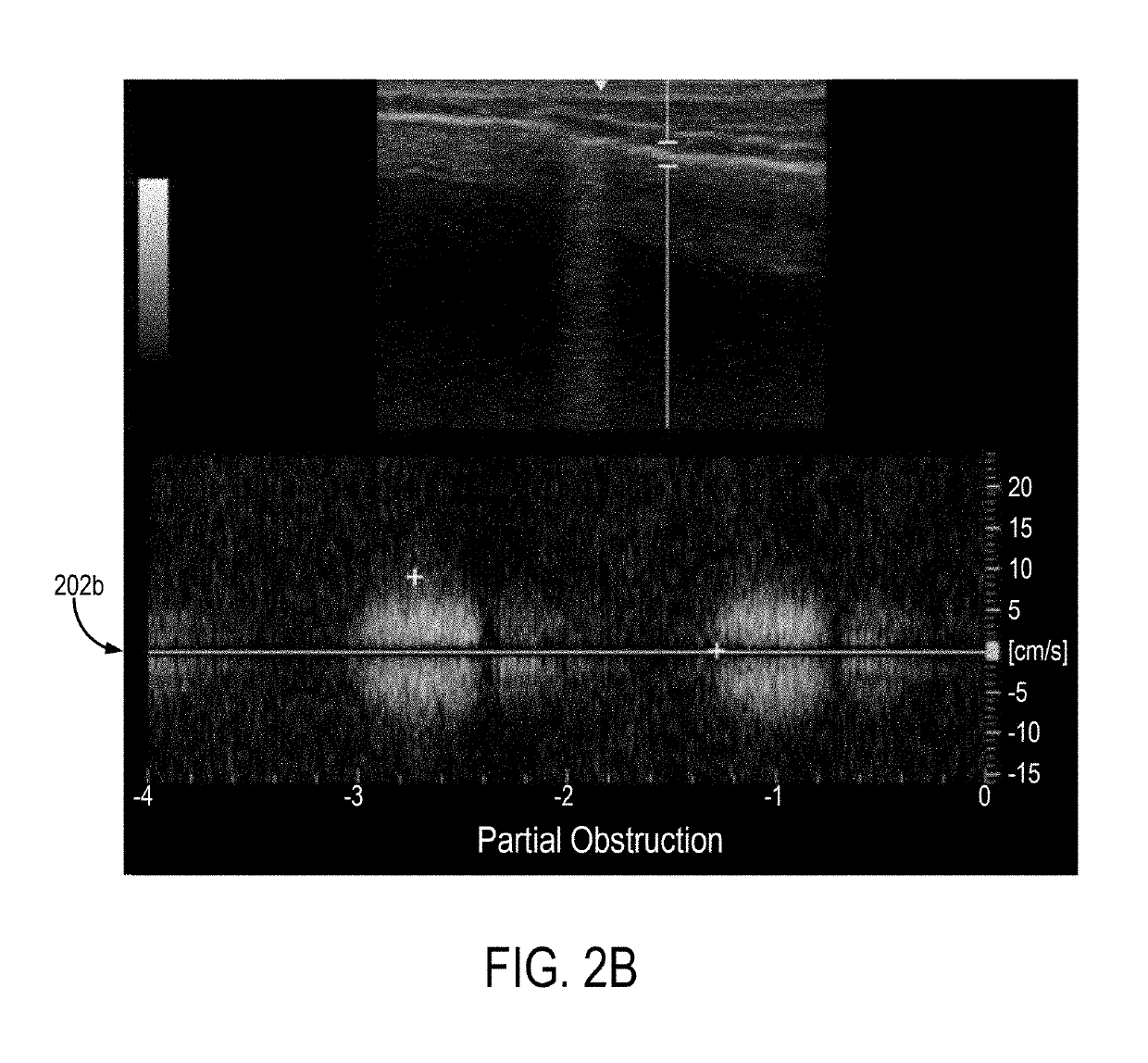System and Method for Monitoring Airflow in a Subject's Airway with Ultrasound
a technology of airflow monitoring and subject airway, applied in the field of system and method for monitoring airflow in a subject's airway with ultrasound, can solve the problems of respiratory failure, impede the timely implementation of rescue measures, and high morbidity and mortality rates of spontaneous breathing patients
- Summary
- Abstract
- Description
- Claims
- Application Information
AI Technical Summary
Benefits of technology
Problems solved by technology
Method used
Image
Examples
Embodiment Construction
[0023]Described here are systems and methods for monitoring airflow changes in a subject's airway. This monitoring may be performed before, during, or following a procedure, or may be used as a general patient monitoring tool. For example, the systems and methods of the present disclosure can be used to monitor signs of airway obstruction or respiratory compromise and / or failure during timeframes where patients have ongoing or residual sedation or anesthetics in their system. The systems and methods can also be implemented for quantitatively measuring airflow and related parameters. As one example, the systems and methods of the present disclosure can be used to quantitatively measure respiratory rate in real-time. In addition, the systems and methods described in the present disclosure provide an improved accuracy because they are capable of detecting actual breaths as opposed to attempted breaths, such as in upper airway obstruction when the chest wall continues to make efforts ag...
PUM
 Login to View More
Login to View More Abstract
Description
Claims
Application Information
 Login to View More
Login to View More - R&D
- Intellectual Property
- Life Sciences
- Materials
- Tech Scout
- Unparalleled Data Quality
- Higher Quality Content
- 60% Fewer Hallucinations
Browse by: Latest US Patents, China's latest patents, Technical Efficacy Thesaurus, Application Domain, Technology Topic, Popular Technical Reports.
© 2025 PatSnap. All rights reserved.Legal|Privacy policy|Modern Slavery Act Transparency Statement|Sitemap|About US| Contact US: help@patsnap.com



